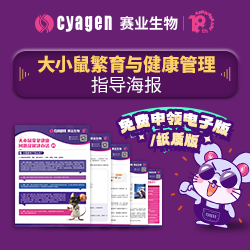
-

生物通官微
陪你抓住生命科技
跳动的脉搏
王慧研究组PLoS ONE获抗肿瘤机制研究新发现
【字体: 大 中 小 】 时间:2012年08月23日 来源:生物通
编辑推荐:
来自中科院上海生科院营养所的研究人员发表了题为“Dihydroartemisinin exerts its anticanceractivity through depleting cellular iron viatransferrin receptor-1”的文章,揭示了青蒿素类化合物双氢青蒿素抗肿瘤的又一新机制。相关成果公布在PLoS ONE杂志上。

生物通报道:来自中科院上海生科院营养所的研究人员发表了题为“Dihydroartemisinin exerts its anticanceractivity through depleting cellular iron viatransferrin receptor-1”的文章,揭示了青蒿素类化合物双氢青蒿素抗肿瘤的又一新机制。相关成果公布在PLoS ONE杂志上。
这项研究由营养所王慧研究组完成,得到了国家自然科学基金委、中国科学院和上海市科委的资助。
青蒿素(Artemisinin)是从黄花蒿中提取的有效成分,为目前最有效的抗疟疾药物之一,其主要衍生物有双氢青蒿素、蒿甲醚、蒿乙醚、青蒿琥酯等。近年来,青蒿素及其衍生物的抗肿瘤作用受到了广泛关注,美国国家癌症研究所(NCI)已将其纳入抗癌药物筛选与抗癌活性研究计划。
去年我国科学家凭借对青蒿素类药物的研究获得2011年国际拉斯科临床医学大奖,青蒿素及其衍生物再度成为举世瞩目的明星分子,其中双氢青蒿素(DHA)是青蒿素的主要代谢产物和活性最强的一种衍生物。
近年来,王慧研究组对青蒿素类化合物的抗肿瘤功能及机制开展了多项研究,已发现青蒿素及其衍生物对卵巢癌、肝癌的抗癌效果并探讨了其作用机制。
最新研究则发现,DHA能造成肿瘤细胞铁元素的缺乏、降低铁元素的吸收、干扰细胞内铁元素既有的平衡状态,且这种改变与氧化损伤无关。进一步研究发现,DHA可以降低细胞膜上的转铁蛋白受体1(TfR1)水平,通过脂筏介导的内吞作用对其进行调控,减弱了细胞对铁的吸收从而杀伤肿瘤细胞。该研究结果将为青蒿素类以及铁元素靶向类抗肿瘤药物的开发提供理论基础。
王慧研究组之前还曾发表文章,通过肿瘤细胞系和动物模型,系统研究了青蒿素及其主要衍生物对卵巢癌的潜在抗癌活性以及构效关系,并探讨了相关分子机制。研究表明:双氢青蒿素(Dihydroartemisinin)在该类化合物中活性较强,能有效的抑制卵巢癌的生长,其抗癌机制是通过“死亡受体以及线粒体介导的-Caspases依赖性”凋亡信号途径来实现的;同时双氢青蒿素可以作为化疗药物增敏剂,明显提高卵巢癌一线化疗药卡铂(Carboplatin)的疗效。该研究为青蒿素类化合物作为新型抗癌(辅助)药物用于临床研究提供了重要的实验依据。
(生物通:万纹)
原文摘要:
Dihydroartemisinin exerts its anticanceractivity through depleting cellular iron viatransferrin receptor-1
Artemisinin and its main active metabolite dihydroartemisinin, clinically used antimalarial agents with low host toxicity, have recently shown potent anticancer activities in a variety of human cancer models. Although iron mediated oxidative damage is involved, the mechanisms underlying these activities remain unclear. In the current study, we found that dihydroartemisinin caused cellular iron depletion in time- and concentration-dependent manners. It decreased iron uptake and disturbed iron homeostasis in cancer cells, which were independent of oxidative damage. Moreover, dihydroartemisinin reduced the level of transferrin receptor-1 associated with cell membrane. The regulation of dihydroartemisinin to transferrin receptor-1 could be reversed by nystatin, a cholesterol-sequestering agent but not the inhibitor of clathrin-dependent endocytosis. Dihydroartemisinin also induced transferrin receptor-1 palmitoylation and colocalization with caveolin-1, suggesting a lipid rafts mediated internalization pathway was involved in the process. Also, nystatin reversed the influences of dihydroartemisinin on cell cycle and apoptosis related genes and the siRNA induced downregulation of transferrin receptor-1 decreased the sensitivity to dihydroartemisinin efficiently in the cells. These results indicate that dihydroartemisinin can counteract cancer through regulating cell-surface transferrin receptor-1 in a non-classical endocytic pathway, which may be a new action mechanism of DHA independently of oxidative damage.
下载安捷伦电子书《通过细胞代谢揭示新的药物靶点》探索如何通过代谢分析促进您的药物发现研究
10x Genomics新品Visium HD 开启单细胞分辨率的全转录组空间分析!
 生物通微信公众号
生物通微信公众号
今日动态 | 人才市场 | 新技术专栏 | 中国科学人 | 云展台 | BioHot | 云讲堂直播 | 会展中心 | 特价专栏 | 技术快讯 | 免费试用
版权所有 生物通
Copyright© eBiotrade.com, All Rights Reserved
联系信箱:
粤ICP备09063491号
